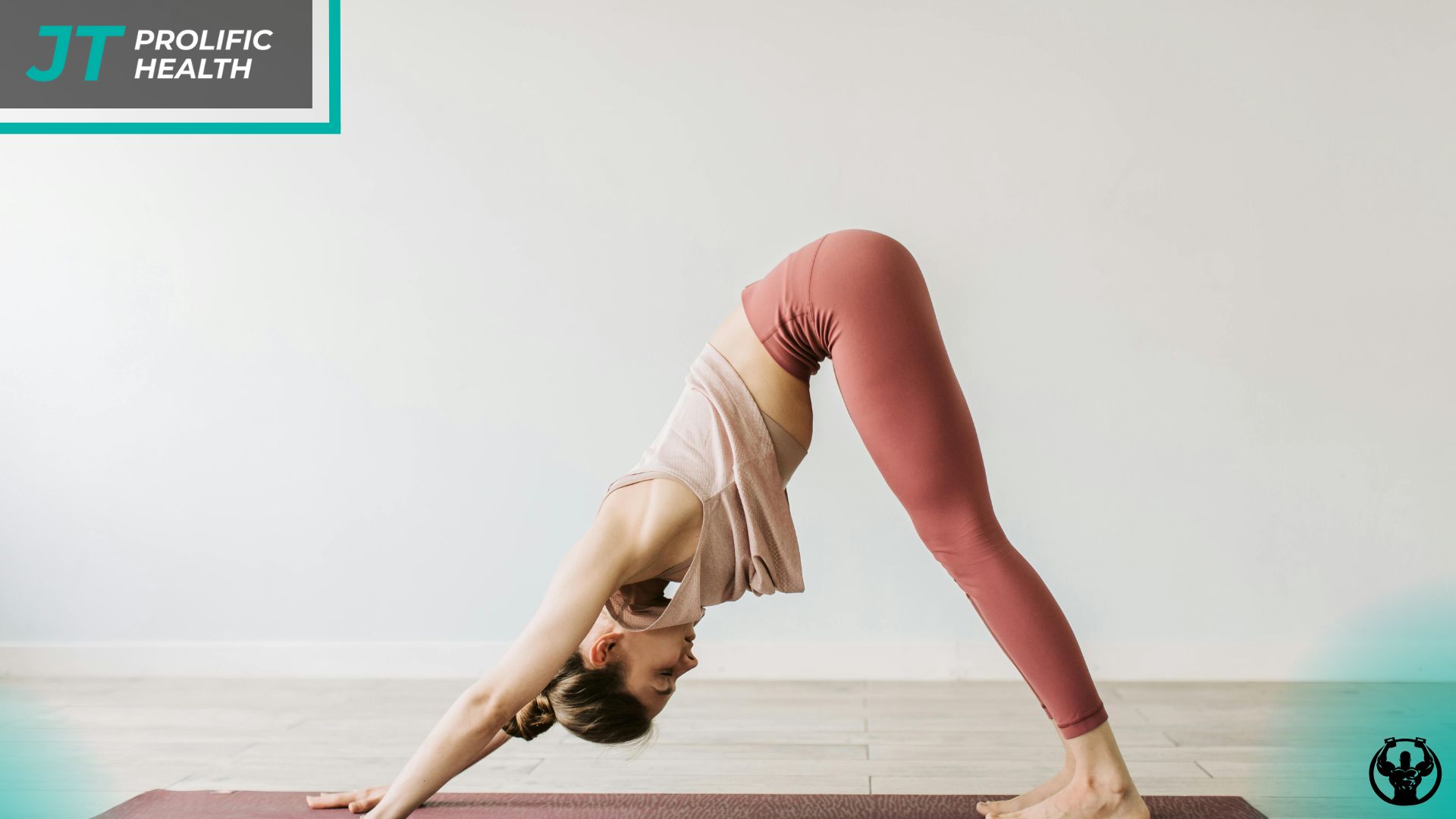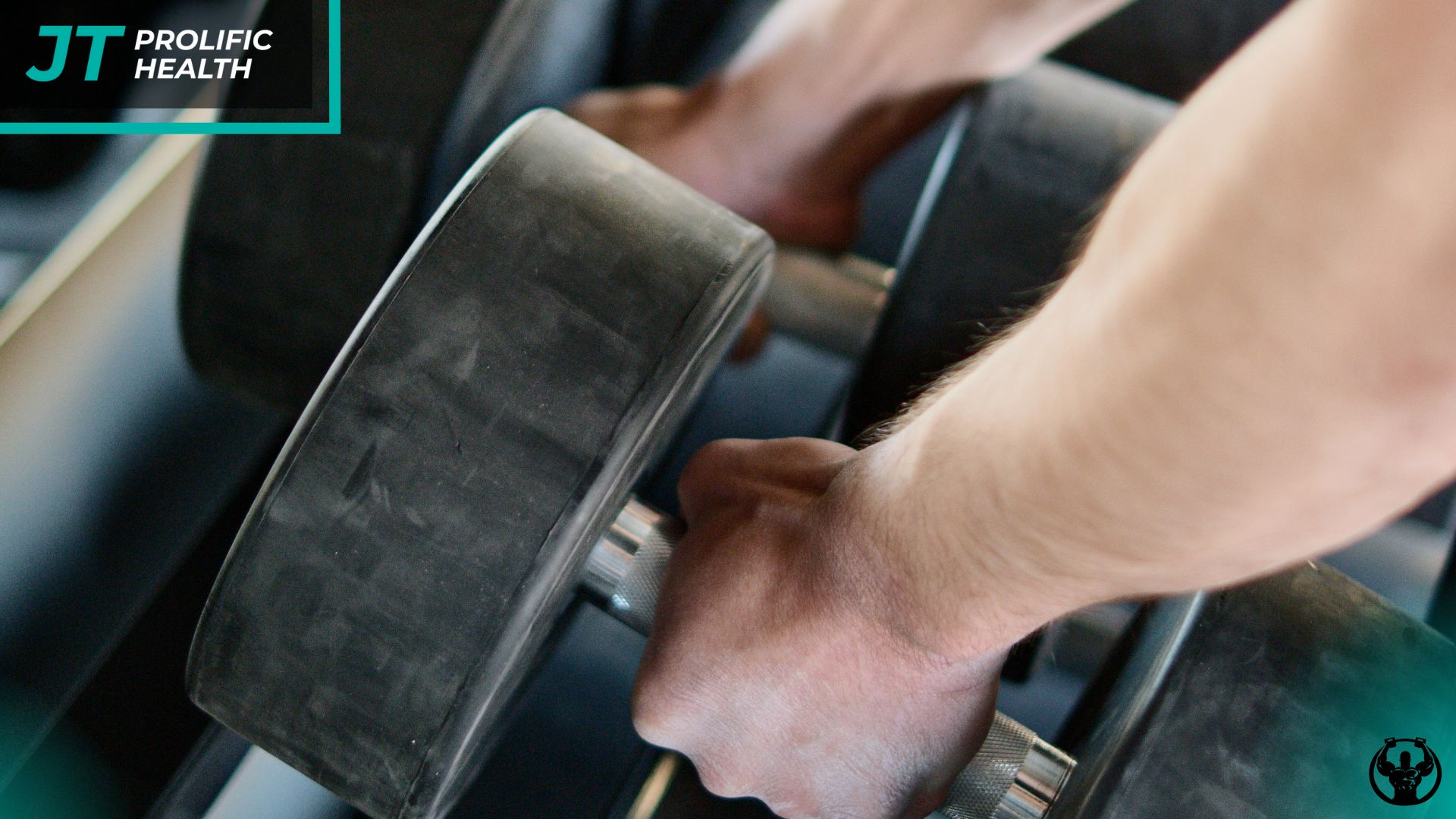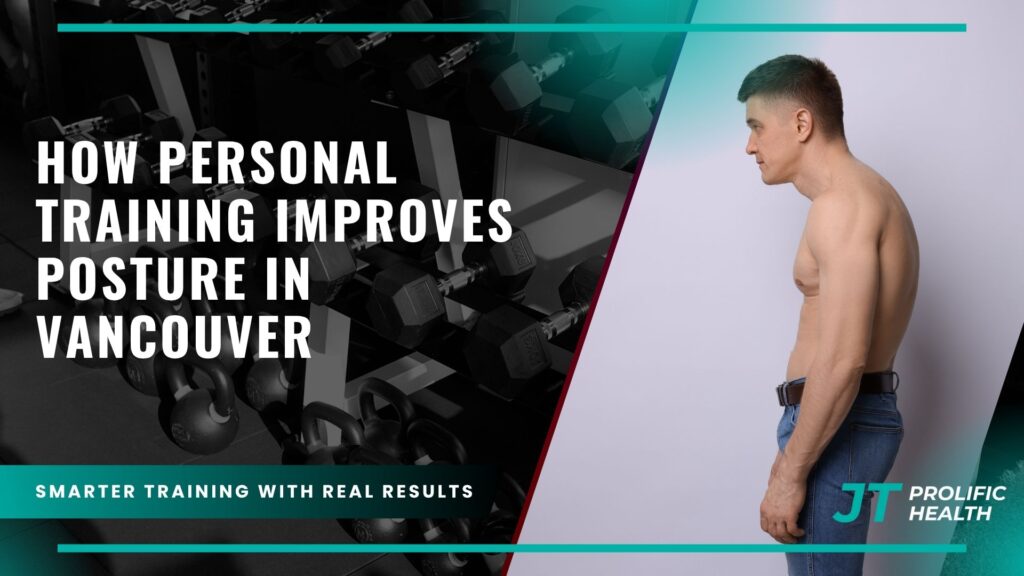Poor posture has become an epidemic in our modern world, affecting millions of people who spend countless hours hunched over computers, looking down at smartphones, or sitting in poorly designed workspaces. In Vancouver, where the tech industry thrives and many professionals work long hours at desks, posture-related issues are increasingly common. The consequences extend far beyond appearance, leading to chronic pain, reduced mobility, decreased confidence, and long-term health complications that can significantly impact quality of life. Personal Training for Better Posture offers an effective solution by addressing muscle imbalances, improving alignment, and promoting healthier movement patterns.
Personal training offers a comprehensive solution to posture problems that goes beyond simple reminders to “sit up straight.” Professional trainers understand the complex biomechanics involved in maintaining proper alignment and can identify the specific muscle imbalances, weaknesses, and movement patterns that contribute to poor posture. Through targeted exercises, corrective techniques, and ongoing guidance, personal training addresses the root causes of postural dysfunction rather than merely treating symptoms.
Vancouver’s active lifestyle culture makes it an ideal environment for pursuing posture improvement through personal training. The city’s numerous fitness facilities, outdoor recreation opportunities, and health-conscious population create a supportive atmosphere for making lasting changes. Personal trainers in Vancouver are well-versed in helping clients overcome the postural challenges that come with urban living, whether they’re office workers dealing with forward head posture, athletes seeking performance enhancement, or individuals recovering from injuries.
The journey toward better posture requires more than occasional gym visits or sporadic stretching sessions. It demands a systematic approach that addresses muscle imbalances, strengthens weakened areas, improves flexibility in tight regions, and retrains movement patterns that have developed over years or decades. Personal trainers provide the expertise, accountability, and customized programming necessary to make meaningful improvements in posture while ensuring that changes are sustainable and integrated into daily life.
Understanding how personal training improves posture involves recognizing that good posture is not simply about standing or sitting up straight. It’s about creating optimal alignment throughout the entire kinetic chain, from the feet and ankles up through the spine to the head and neck. This alignment allows for efficient movement, reduces stress on joints and soft tissues, and enables the body to function as it was designed. Personal trainers use their knowledge of anatomy, biomechanics, and exercise science to create comprehensive programs that restore this optimal alignment and teach clients how to maintain it throughout their daily activities.
Key Takeaways
For additional context, see this comprehensive guide.
- Comprehensive Assessment: Personal trainers conduct thorough postural assessments that identify specific imbalances, weaknesses, and movement dysfunctions contributing to poor posture, creating a foundation for targeted intervention strategies.
- Targeted Muscle Strengthening: Specialized exercise programs focus on strengthening weakened postural muscles, particularly the deep core stabilizers, posterior chain muscles, and often-neglected areas like the middle and lower trapezius.
- Flexibility and Mobility Work: Systematic stretching and mobility exercises address tight, overactive muscles that pull the body out of alignment, including hip flexors, chest muscles, and upper trapezius commonly affected by prolonged sitting.
- Movement Pattern Correction: Trainers teach proper movement mechanics for daily activities, helping clients develop awareness of their postural habits and providing strategies for maintaining good alignment throughout the day.
- Progressive Exercise Programming: Structured progression ensures that improvements in strength, flexibility, and postural awareness build upon each other, creating lasting changes rather than temporary fixes.
- Education and Awareness: Personal trainers provide valuable education about ergonomics, workplace setup, and lifestyle modifications that support good posture beyond exercise sessions.
- Accountability and Motivation: Regular sessions with a personal trainer provide the consistency and motivation necessary for making significant postural improvements, which often require weeks or months of dedicated effort.
- Injury Prevention: Improved posture through personal training reduces the risk of developing chronic pain conditions, repetitive stress injuries, and other musculoskeletal problems associated with poor alignment.
Understanding Postural Problems in Vancouver’s Urban Environment


For additional context, see detailed information on this topic.
Vancouver’s unique combination of technology-driven industries, urban lifestyle demands, and environmental factors creates specific postural challenges for its residents. The city’s thriving tech sector means many professionals spend 8-12 hours daily in seated positions, often with suboptimal workstation setups that encourage forward head posture, rounded shoulders, and excessive spinal flexion. These prolonged static positions lead to adaptive shortening of certain muscle groups while others become weak and inhibited, creating the foundation for chronic postural dysfunction.
The modern lifestyle in Vancouver also involves significant time spent looking down at mobile devices, a phenomenon that has become so common it has earned the term “tech neck.” This forward head posture places enormous stress on the cervical spine and surrounding musculature, often leading to headaches, neck pain, and upper back tension. The weight of the head effectively multiplies as it moves forward from its optimal position over the shoulders, creating a cascade of compensatory patterns throughout the entire spine.
Environmental factors unique to Vancouver, such as frequent rain that keeps people indoors and the prevalence of driving in traffic, further contribute to postural problems. Extended periods of sitting in cars, often in less-than-ideal positions, reinforce the same problematic patterns developed at work. Additionally, the city’s coffee culture and numerous cafes, while socially beneficial, often feature seating that doesn’t support good posture, leading to additional hours spent in compromised positions.
Personal trainers in Vancouver understand these specific challenges and design programs that directly address the postural adaptations common to urban living. They recognize that improving posture isn’t just about strengthening weak muscles or stretching tight ones—it’s about retraining the entire neuromuscular system to function optimally despite the demands of modern life. This understanding allows them to create more effective, targeted interventions that produce lasting results.
The Science Behind Postural Improvement Through Personal Training


For additional context, see our in-depth resource.
Personal training improves posture through evidence-based approaches that address the complex interplay of factors contributing to postural dysfunction. The process begins with understanding that posture is controlled by the central nervous system, which coordinates muscle activation patterns to maintain upright positioning against gravity. When certain muscles become overactive due to repetitive positioning or stress, they can inhibit their antagonists, creating imbalances that pull the body out of optimal alignment.
The concept of upper crossed syndrome and lower crossed syndrome, identified by renowned physical therapist Vladimir Janda, provides a framework that many personal trainers use to understand and address common postural patterns. Upper crossed syndrome involves tight chest muscles and upper trapezius combined with weak deep neck flexors and middle/lower trapezius, resulting in forward head posture and rounded shoulders. Lower crossed syndrome features tight hip flexors and erector spinae with weak gluteals and abdominals, leading to anterior pelvic tilt and excessive lumbar lordosis.
Personal trainers apply corrective exercise principles to address these imbalances systematically. The process typically follows a progression that includes inhibiting overactive muscles through techniques like foam rolling and targeted stretching, lengthening shortened tissues through static and dynamic stretching protocols, activating weakened muscles through isolation exercises and neuromuscular re-education, and finally integrating improved movement patterns through functional exercises and daily activity training.
Neuroplasticity plays a crucial role in postural improvement, as the brain must literally rewire itself to support new movement patterns and postural habits. Personal trainers understand that this process requires consistent repetition and progressive challenge to create lasting changes. They design programs that provide sufficient stimulus for adaptation while avoiding overwhelming the nervous system, which could lead to regression or compensation patterns.
Research in exercise science has identified specific training methods that are particularly effective for postural improvement. These include core stabilization exercises that target the deep abdominal and spinal muscles responsible for maintaining spinal alignment, posterior chain strengthening to counteract the forward-pulling forces of modern life, and proprioceptive training that improves body awareness and automatic postural responses. Personal trainers combine these evidence-based approaches with their understanding of individual client needs to create comprehensive programs that address all aspects of postural dysfunction.
Targeted Exercise Strategies for Postural Correction


Effective postural correction through personal training involves a systematic approach to exercise selection and progression that addresses the specific imbalances and dysfunctions identified during assessment. Personal trainers utilize a variety of exercise categories, each serving a distinct purpose in the overall corrective strategy. The foundation begins with mobility and flexibility work designed to restore normal range of motion to restricted joints and lengthen shortened soft tissues that contribute to postural deviations.
Stretching protocols for postural improvement go beyond simple static stretches, incorporating techniques like proprioceptive neuromuscular facilitation (PNF) stretching, active isolated stretching, and myofascial release. For clients with forward head posture, trainers focus on lengthening the suboccipital muscles, upper trapezius, and levator scapulae while improving thoracic spine extension mobility. Hip flexor stretching becomes crucial for addressing anterior pelvic tilt, with trainers often prescribing variations of the couch stretch, 90/90 hip stretches, and dynamic hip flexor mobilizations.
Strengthening exercises form the core of postural correction programs, with particular emphasis on muscles that have become weak and inhibited due to poor postural habits. Deep neck flexor strengthening helps counteract forward head posture, while middle and lower trapezius exercises address the rounded shoulder component of upper crossed syndrome. Personal trainers often incorporate exercises like prone Y-T-W raises, wall slides, and face pulls to target these commonly weakened areas.
Core stabilization represents perhaps the most critical component of postural training, as the deep abdominal and spinal muscles provide the foundation for all other postural improvements. Personal trainers teach clients to engage their transverse abdominis, multifidus, and pelvic floor muscles through exercises like dead bugs, bird dogs, and pallof presses. These exercises challenge stability while maintaining neutral spine alignment, helping to retrain the automatic postural responses that support good posture throughout daily activities.
Integration exercises bridge the gap between isolated corrective work and functional movement patterns. Personal trainers design exercises that challenge clients to maintain good posture while performing complex movements, such as squats with overhead reaches, single-leg deadlifts with rotation, or carrying exercises that require core stability and postural control. This progression ensures that postural improvements transfer to real-world activities and become automatic rather than conscious efforts.
Addressing Common Postural Issues Through Personal Training
Personal trainers encounter several recurring postural problems among Vancouver clients, each requiring specific intervention strategies and exercise modifications. Forward head posture, characterized by the head positioned anterior to the shoulders, represents one of the most prevalent issues in the modern population. This condition places enormous stress on the cervical spine and can lead to headaches, neck pain, and referred symptoms into the shoulders and arms. Personal trainers address this through a combination of suboccipital stretching, deep neck flexor strengthening, and thoracic spine mobility work.
Rounded shoulders, often accompanying forward head posture, result from tight chest muscles and weak posterior deltoids and rhomboids. Personal trainers design programs that include doorway chest stretches, pectoral releases using foam rollers or lacrosse balls, and strengthening exercises for the often-neglected middle and lower trapezius muscles. The key lies in addressing both components simultaneously—lengthening the tight anterior structures while strengthening the weak posterior ones.
Excessive kyphosis, or increased rounding of the upper back, presents unique challenges that require careful exercise selection and progression. Personal trainers must differentiate between structural and functional kyphosis, as the approach differs significantly. For functional kyphosis, which is more common and responsive to intervention, trainers focus on thoracic spine extension exercises, strengthening the erector spinae and deep spinal muscles, and improving overall spinal mobility through targeted stretching and mobilization techniques.
Lower back issues often stem from anterior pelvic tilt, where the pelvis rotates forward, creating excessive lumbar lordosis and placing stress on the lower back structures. Personal trainers address this pattern through hip flexor stretching, particularly targeting the psoas and rectus femoris, while simultaneously strengthening the gluteal muscles and deep abdominal stabilizers. Exercises like glute bridges, clamshells, and dead bugs become staples in these corrective programs.
Lateral postural deviations, including scoliosis and lateral pelvic tilts, require individualized approaches that consider the specific curve patterns and compensations present. Personal trainers work to address muscle imbalances on both sides of the body, often incorporating unilateral exercises and asymmetrical loading patterns to help restore balance. For those dealing with injury-related postural changes, trainers may need to modify traditional exercises to accommodate limitations while still making progress toward postural improvement.
The Role of Movement Education and Body Awareness
Beyond specific exercises, personal trainers play a crucial role in educating clients about proper movement patterns and developing the body awareness necessary for maintaining good posture throughout daily activities. This educational component often proves more valuable than the exercise sessions themselves, as it empowers clients to make continuous improvements and avoid regression between training sessions. Personal trainers teach clients to recognize the feeling of good posture and develop the proprioceptive skills necessary to maintain it automatically.
Movement education begins with teaching clients how to find and maintain neutral spine alignment in various positions. Personal trainers guide clients through the process of identifying their natural lumbar curve, engaging their core muscles appropriately, and positioning their shoulders and head in optimal alignment. This foundation becomes the reference point for all other movements and activities, providing clients with a clear understanding of what good posture should feel like.
Breathing patterns play a significant role in postural control, as dysfunctional breathing can contribute to neck tension, core weakness, and overall postural dysfunction. Personal trainers teach diaphragmatic breathing techniques that support core stability while reducing tension in accessory breathing muscles like the upper trapezius and scalenes. Proper breathing mechanics also help activate the deep core muscles that provide spinal stability and postural support.
Workplace ergonomics education represents a critical component of postural improvement, particularly for Vancouver’s large population of office workers. Personal trainers provide guidance on optimal workstation setup, including monitor height, keyboard position, chair adjustment, and the importance of regular movement breaks. They teach clients simple exercises and stretches that can be performed at work to counteract the effects of prolonged sitting and maintain postural awareness throughout the day.
Personal trainers also address movement patterns outside of exercise, teaching clients how to lift objects properly, how to sleep in positions that support spinal alignment, and how to carry bags and backpacks without creating postural stress. This comprehensive approach ensures that all aspects of daily life support rather than undermine the postural improvements made during training sessions. For beginners who are just starting their fitness journey, understanding when to seek professional guidance can be crucial for addressing postural issues before they become chronic problems.
Measuring Progress and Long-term Success
Personal trainers utilize various methods to track postural improvements and ensure that clients are making meaningful progress toward their goals. Visual assessment tools, including posture grids and photographic documentation, provide objective measures of postural changes over time. Many trainers take initial photos from multiple angles and repeat these assessments periodically to document improvements in head position, shoulder alignment, and spinal curvature. These visual records serve as powerful motivation for clients and help trainers adjust programming as needed.
Functional movement assessments complement visual postural analysis by evaluating how postural improvements translate into better movement quality during dynamic activities. Personal trainers observe clients performing basic movement patterns like squats, lunges, and overhead reaches, looking for improvements in alignment, stability, and coordination. These assessments help ensure that postural gains are integrated into functional movement rather than existing only in static positions.
Subjective measures, including pain levels, energy levels, and overall quality of life indicators, provide important feedback about the real-world impact of postural improvements. Personal trainers regularly check in with clients about symptoms like headaches, neck pain, and back discomfort, as well as positive changes like improved confidence, better sleep quality, and increased energy levels. These subjective improvements often motivate clients to continue their postural training even when visual changes are subtle.
Technology increasingly plays a role in postural assessment and progress tracking, with some personal trainers utilizing postural analysis apps, wearable devices that monitor posture throughout the day, and movement screening tools that provide detailed biomechanical analysis. While these tools can provide valuable data, experienced trainers understand that the human element—observation, palpation, and client feedback—remains irreplaceable in comprehensive postural assessment.
Long-term success in postural improvement requires ongoing attention and periodic reassessment, as the demands of daily life can gradually erode gains if not actively maintained. Personal trainers help clients develop sustainable exercise routines and lifestyle habits that support continued postural health. This might include transitioning from frequent training sessions to periodic check-ins, providing home exercise programs that can be performed independently, and educating clients about warning signs that indicate the need for additional intervention. For those looking to track their overall fitness progress, understanding comprehensive progress monitoring methods can provide valuable insights into the multifaceted nature of health and fitness improvements.
At Prolific Health, our experienced personal trainers understand that postural improvement is a journey that requires patience, consistency, and expert guidance. We combine evidence-based exercise programming with comprehensive movement education to help Vancouver residents overcome the postural challenges of modern life and achieve lasting improvements in alignment, comfort, and overall well-being.
Frequently Asked Questions
How long does it take to see improvements in posture through personal training?
Most clients begin noticing improvements in posture within 4-6 weeks of consistent personal training, though the timeline varies based on the severity of postural issues and individual factors. Initial changes often include reduced pain and improved body awareness, while visible postural changes typically become apparent after 8-12 weeks of dedicated training.
Can personal training help with posture if I have a desk job?
Yes, personal training is particularly effective for addressing posture problems related to desk work. Trainers design programs specifically targeting the muscle imbalances common in office workers, including forward head posture, rounded shoulders, and hip flexor tightness. They also provide workplace ergonomics education and exercises that can be performed during the workday.
What types of exercises are most effective for improving posture?
The most effective exercises for postural improvement include core stabilization exercises, posterior chain strengthening, targeted stretching for tight muscles, and movement pattern training. Specific exercises like dead bugs, face pulls, hip flexor stretches, and thoracic spine mobility work are commonly prescribed based on individual assessment findings.
Is it too late to improve posture if I’m older or have had poor posture for years?
It’s never too late to improve posture, though the approach may need modification based on age and the duration of postural problems. While structural changes become more fixed over time, functional improvements in muscle balance, flexibility, and movement patterns can significantly reduce pain and improve quality of life at any age.
How often should I train with a personal trainer to improve my posture?
For optimal postural improvement, most clients benefit from 2-3 personal training sessions per week initially, with the option to reduce frequency as they develop independence and see improvements. The key is consistency rather than intensity, as postural changes require time and repetition to become permanent.
Can poor posture cause health problems beyond back and neck pain?
Yes, poor posture can contribute to various health issues including headaches, reduced lung capacity, digestive problems, increased injury risk, and even mood changes. Postural dysfunction affects the entire kinetic chain and can impact multiple body systems, making correction beneficial for overall health and well-being.
Do I need special equipment for postural correction exercises?
While some equipment can be helpful, many effective postural exercises can be performed with minimal equipment. Personal trainers often use resistance bands, foam rollers, and stability balls, but bodyweight exercises and simple props can provide significant benefits. The key is proper exercise selection and progression rather than expensive equipment.
How do I maintain postural improvements after completing personal training?
Maintaining postural improvements requires ongoing attention to exercise, ergonomics, and movement habits. Personal trainers typically provide home exercise programs, workplace modification strategies, and periodic check-ins to ensure long-term success. For those just beginning their fitness journey, learning how to prepare for initial training sessions can help establish the foundation for lasting postural improvements.
Conclusion
Personal training represents the most comprehensive and effective approach to improving posture in Vancouver’s demanding urban environment. Through systematic assessment, targeted exercise programming, movement education, and ongoing support, personal trainers address the root causes of postural dysfunction rather than merely treating symptoms. The combination of professional expertise, individualized programming, and accountability creates an environment where meaningful and lasting postural improvements can occur.
The benefits of improved posture extend far beyond appearance, encompassing reduced pain, enhanced mobility, increased confidence, and better overall health. For Vancouver residents dealing with the postural challenges of modern life—whether from desk work, technology use, or urban lifestyle demands—personal training offers a path to reclaiming optimal alignment and function. The investment in professional guidance pays dividends in improved quality of life, reduced healthcare costs, and enhanced performance in both professional and recreational activities.
Success in postural improvement requires patience, consistency, and expert guidance, but the results are achievable for individuals of all ages and fitness levels. Personal trainers understand that each client presents unique challenges and adapt their approaches accordingly, ensuring that programs are both effective and sustainable. The integration of exercise, education, and lifestyle modification creates a comprehensive solution that addresses all aspects of postural health.
For those considering personal training for postural improvement, the key is finding a qualified professional who understands the complexities of postural dysfunction and has experience designing corrective exercise programs. The journey toward better posture is not always quick or easy, but with proper guidance and commitment, the transformation can be remarkable. In Vancouver’s health-conscious culture, personal training for postural improvement represents an investment in long-term wellness that pays dividends for years to come. Understanding the comprehensive approach that includes nutritional guidance can further enhance the benefits of postural training by supporting overall health and recovery.




